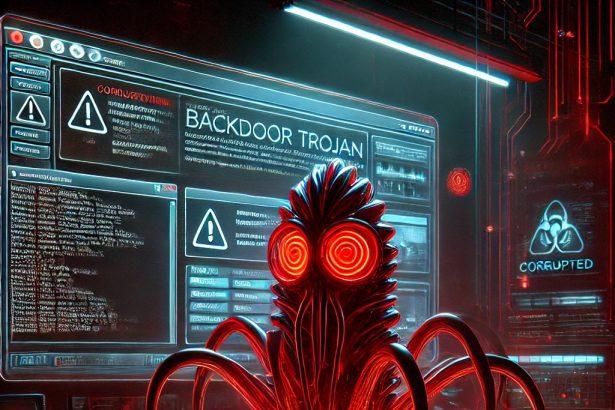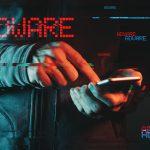PureRAT is a sophisticated Remote Access Trojan (RAT) that stealthily infiltrates Windows systems via phishing campaigns. It provides attackers full control over the compromised device, enabling real-time surveillance, data theft, and system manipulation. This article delves into PureRAT’s nature, capabilities, and operational tactics, helping security-conscious readers grasp the threat.
Threat Overview
| Feature | Details |
|---|---|
| Threat Type | Remote Access Trojan (RAT) |
| Detection Names | Avast: Win32:MalwareX-gen [Cryp]; Combo Cleaner: Gen:Variant.Jalapeno.18072; ESET‑NOD32: MSIL/Kryptik.ANPO; Kaspersky: HEUR:Backdoor.MSIL.Crysan.gen; Microsoft: Backdoor:MSIL/Crysan.APTA!MTB |
| Symptoms | Designed to be stealthy—no noticeable UI; unauthorized network traffic, elevated resource usage, hidden processes |
| Damage & Distribution | Data theft (passwords, banking, crypto wallets), identity exposure, botnet participation, DDoS capability; distributed via phishing emails, malicious PDF attachments linking to cloud-hosted ZIPs |
| Danger Level | High—modular, evasive, and capable of deep system compromise |
| Removal Tool | SpyHunter — malware removal: Download SpyHunter |
Detailed Threat Evaluation
How did I get infected?
Attackers impersonate trusted contacts by sending PDFs embedded with links to cloud file storage. These lead to ZIP archives containing malicious .pdf.exe files and DLLs, often disguised as tax or license documents. Once opened, they deploy PureRAT through a stealthy DLL sideload via Ghost Crypt, which injects the RAT into legitimate processes using a technique called “process hypnosis.”
What does it do?
Once active, PureRAT performs a wide range of malicious functions:
- Harvests browser history, extensions, crypto-wallet data (Atomic Wallet, Exodus, Ledger Live), Telegram, Steam, and Outlook
- Logs keystrokes and screenshots
- Hijacks webcam and microphone
- Supports file management, registry editing, network configuration, startup control, DDoS, clipper injection, and remote command execution
Attackers maintain full remote desktop control, can reboot or shut down the system, manipulate antivirus settings, and initiate real-time chat via the RAT interface.
Why is it dangerous?
PureRAT combines surveillance, silent data exfiltration, and remote control into one low-profile package. It’s delivered via powerful crypters such as Ghost Crypt that evade modern antivirus solutions, even on fully-patched systems like Windows 11 24H2. Its use in targeted phishing campaigns is rapidly increasing, making it one of the most formidable threats in current circulation.
Should you be worried?
Yes. PureRAT poses a serious threat, especially to users handling sensitive information, cryptocurrency, or enterprise assets. Its stealth tactics, combined with its extensive control over infected systems, make it a high-severity cyber risk. Early detection and immediate action are critical to mitigate its impact.
Technical Deep Dive: Attack Chain
- Initial Infection: Social engineering via PDF with cloud link → ZIP with
.pdf.exeand encrypted DLL - DLL Sideloader: Legitimate app (e.g.,
hpreader.exe) loads malicious DLL renamed to look legitimate - Process Hypnosis Injection: Uses Windows debugging APIs to inject payload into
csc.exe, bypassing standard security monitoring - Persistence & Exfiltration: DLL copied to user directories; registry Run key added; initiates encrypted command-and-control connection and awaits attacker commands
Manual Trojan Malware Removal Guide
Step 1: Boot into Safe Mode
- Restart your computer.
- Before Windows starts, press the F8 key (or Shift + F8 on some systems).
- Select Safe Mode with Networking from the Advanced Boot Options menu.
- Press Enter to boot.
This prevents the Trojan from running and makes it easier to remove.
Step 2: Identify and Stop Malicious Processes
- Press Ctrl + Shift + Esc to open Task Manager.
- Go to the Processes tab (or Details in Windows 10/11).
- Look for suspicious processes using high CPU or memory, or with unfamiliar names.
- Right-click on the suspicious process and select Open File Location.
- If the file is in a temporary or system folder and looks unfamiliar, it is likely malicious.
- Right-click the process and choose End Task.
- Delete the associated file in File Explorer.
Step 3: Remove Trojan-Related Files and Folders
- Press Win + R, type %temp%, and press Enter.
- Delete all files in the Temp folder.
- Also check these directories for unfamiliar or recently created files:
- C:\Users\YourUser\AppData\Local\Temp
- C:\Windows\Temp
- C:\Program Files (x86)
- C:\ProgramData
- C:\Users\YourUser\AppData\Roaming
- Delete suspicious files or folders.
Step 4: Clean Trojan Malware from Registry
- Press Win + R, type regedit, and press Enter.
- Navigate to the following paths:
HKEY_LOCAL_MACHINE\SOFTWARE\Microsoft\Windows\CurrentVersion\RunHKEY_CURRENT_USER\SOFTWARE\Microsoft\Windows\CurrentVersion\Run
- Look for entries launching files from suspicious locations.
- Right-click and delete any entries you don’t recognize.
Warning: Editing the registry can harm your system if done improperly. Proceed with caution.
Step 5: Reset Browser Settings
Google Chrome
- Go to Settings > Reset Settings.
- Click Restore settings to their original defaults and confirm.
Mozilla Firefox
- Go to Help > More Troubleshooting Information.
- Click Refresh Firefox.
Microsoft Edge
- Go to Settings > Reset settings.
- Click Restore settings to their default values.
Step 6: Run a Full Windows Defender Scan
- Open Windows Security via Settings > Update & Security.
- Click Virus & threat protection.
- Choose Scan options, select Full scan, and click Scan now.
Step 7: Update Windows and Installed Software
- Press Win + I, go to Update & Security > Windows Update.
- Click Check for updates and install all available updates.
Automatic Trojan Removal Using SpyHunter
If manually removing the Trojan seems difficult or time-consuming, using SpyHunter is the recommended method. SpyHunter is an advanced anti-malware tool that detects and eliminates Trojan infections effectively.
Step 1: Download SpyHunter
Use the following official link to download SpyHunter: Download SpyHunter
For full instructions on how to install, follow this page: Official SpyHunter Download Instructions
Step 2: Install SpyHunter
- Locate the SpyHunter-Installer.exe file in your Downloads folder.
- Double-click the installer to begin setup.
- Follow the on-screen prompts to complete the installation.
Step 3: Scan Your System
- Open SpyHunter.
- Click Start Scan Now.
- Let the program detect all threats, including Trojan components.
Step 4: Remove Detected Malware
- After the scan, click Fix Threats.
- SpyHunter will automatically quarantine and remove all identified malicious components.
Step 5: Restart Your Computer
Restart your system to ensure all changes take effect and the threat is completely removed.
Tips to Prevent Future Trojan Infections
- Avoid downloading pirated software or opening unknown email attachments.
- Only visit trusted websites and avoid clicking on suspicious ads or pop-ups.
- Use a real-time antivirus solution like SpyHunter for ongoing protection.
- Keep your operating system, browsers, and software up to date.
Conclusion
PureRAT is not a basic RAT. It leverages stealthy infection techniques, crypter-assisted delivery, and modular capabilities to enable deep compromise of infected systems. Individuals and organizations should treat this threat as critical. If infection is suspected, use a dedicated malware removal tool like SpyHunter to eliminate the RAT and restore system security.




